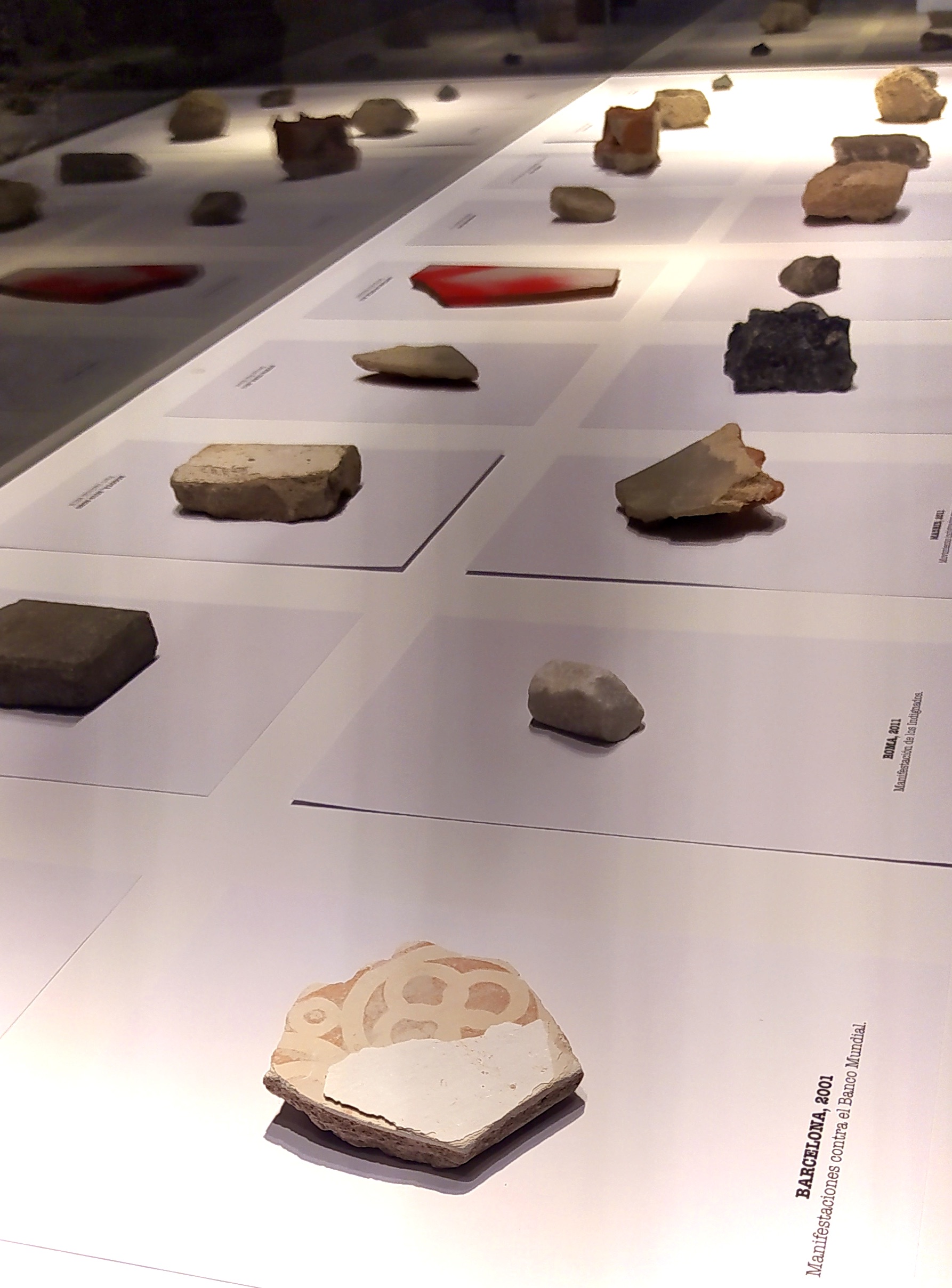“The world is falling apart and some people like Ansel Adams and Edward Weston are taking pictures of rocks”, criticised Henri Cartier-Bresson in 1930, in a plea for the importance of art in turbulent times. Adams’ reply was not long in coming: for the Californian, a rock could be more socially significant than a queue of unemployed people1.
This relevance is very well reflected in the work of Avelino Sala, who, with the installation Museo Arqueológico de la Revuelta, shows a series of museographic showcases with a collection of stones collected by the artist in different demonstrations around the world -Italy, Armenia, Turkey, Thailand or Spain-, to which are added some sent by some collectives participating in different movements of citizen rebellion.
The work thus becomes a global chronicle of resistance where, beyond the particularities of each of the protest actions, it speaks of the need to take measures in the face of the clear failure of the narratives constructed until now, in order to lay the foundations for a new, fairer and more sustainable paradigm. Such is the case of the stone from Asturias, the artist’s place of origin, whose manifestations provoked by the reconversion of mining lead us to think, on the one hand, of the urgency of a dephossilised society, and on the other, of the need for measures to be taken in accordance with a just and redistributive transition.
Sala’s stones, the same ones used to build barricades – another referential element in the artist’s work – serve to add a touch of irony to his particular approach to iconoclasm. The symbolism of the stone as an archaeological object, and therefore a trace of civilisation, is in this case that of a turbulent civilisation: the only one that is ending with itself. In this sense, the ecosocial transition continues in museums and cultural spaces, maintaining a safe distance, as if it were a stage of shadowy shadows where complicity with global petrosovereignty operates from behind the scenes.
The artist appeals here to the importance of direct and collective action and urges us to take a look that makes visible the interconnection between all the systems of global domination, because, as Rosa Luxemburg pointed out in her day, “doctors can locate the lethal infection in the intestines of poisoned victims as long as they look through their microscopes, but the real germ that killed the people in this hospice is called capitalist society in its pure state “2.
This suggests opening up the debate on the function of violence and the cataloguing of its different typologies within the global late-capitalist system, and the importance of offering forceful, radical and just responses to the inaction of a human being who seems to function only by means of electroshock.
Blanca de la Torre
1 Lucy R. Lippard Undermining (2014) A Wild ride Through land use, politics, and art in the changing west.
2 Andreas Malm (2020), The Bat and Capital. Coronavirus, climate change and social war. Madrid. Errata naturae, p. 124.









